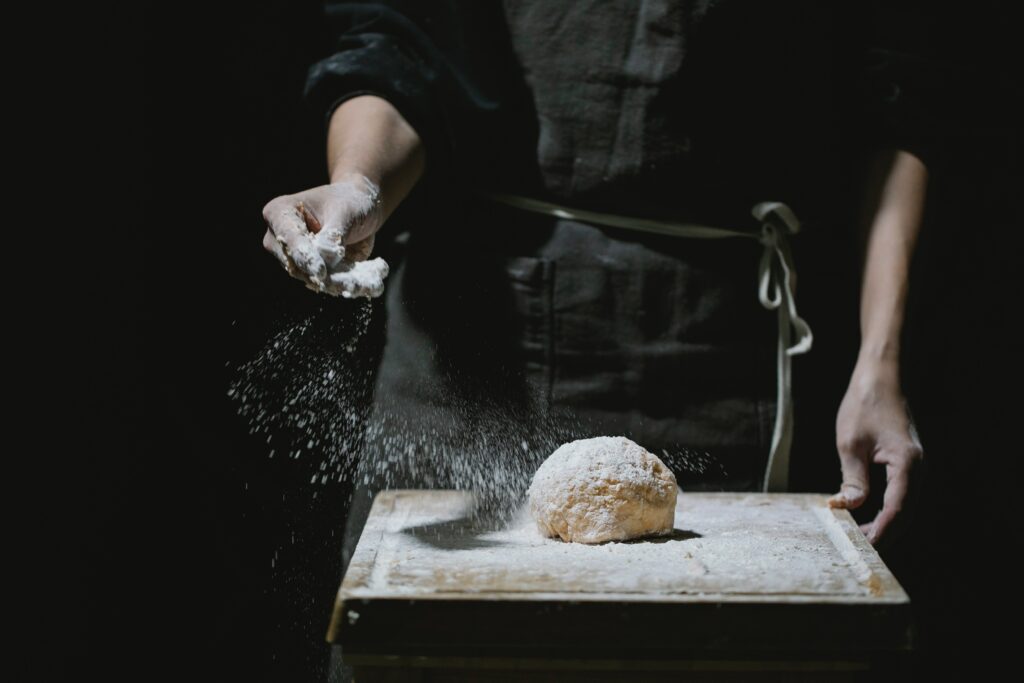The Good Kitchen, former Hospitable Food Service, is Holstebro’s organization that prepares and delivers subsidized meals to people who suffer from a reduced ability to function due to illness, age, or other conditions. It is a new type of meal service in Denmark that stands for a modern and user-centered kitchen with a focus on quality and a high level of service. The meal service produces season-inspired traditional dishes, guest menus, as well as homemade pastry and chocolates. All these options allow seniors to choose freely and flexibly what to eat and gives them the possibility to invite guests.

For seniors, the loss of control over food choices was painful and they felt embarrassed of receiving such assistance. Also, eating alone reminded them that their families were no longer around. So, to address these problems, the Municipality of Holstebro conducted a Design Thinking project in cooperation with the Danish innovation and design agency Hatch & Bloom in 2007. The goal was to improve the nutrition of elderly people, so that they no longer receive the same kind of food, regardless of their health condition and choices, and suffer from diseases caused by malnutrition.
Before the project, 60% of the elderly in nursing homes or under supervision were getting the wrong diet and 20% suffered from malnutrition. Due to poor nutritional conditions, the risk of getting a disease is higher. It is also more difficult for seniors to take care of themselves and perform their daily tasks. Besides health problems and low quality of life for the elderly, the government faced a greater economic burden. Also, the problem could intensify as the number of senior citizens grows as well as their demand on food quality and menu variation.
That the project “The Good Kitchen” succeeded can be seen in the increased meal orders and number of customers and the decrease of sickness absence. Since the reputation of the meal service improved, job applications tripled. The customers and the employees were much happier which improved the nutrition of the seniors, and the employees were more motivated and prouder of their work.
How Design Thinking is used to improve the life quality of Denmark’s elderly
Design Thinking is used through three conducted workshops and tools like ethnographic research, mind mapping, analogies, trigger questions, and co-creation. The goal of the workshops was to get a wide range of ideas by inviting representatives from all user groups and interested parties. The different design solutions were developed through systematic iterations between design and feedback studies. The user-friendliness was tested with prototypes and mock-ups. It helped the involved participants ask better questions to develop deep insights into both customers and employees and thus expanded the scope. At the beginning of the project, Holstebro officials and the leaders of the Hospitable Food Service saw the project as straightforward as in their view food and service were already at high quality and only small adjustments of the menu were needed.As the project progressed, the initial scope had to be changed. Through participants’ observation and interviewing (ethnographic research done in the first Design Thinking phase), it became clear that to increase customer satisfaction and to improve the nutrition of the elderly, the problems of the kitchen’s employees had to be considered as well.

Lessons Learned from the Good Kitchen Story
The Good Kitchen Story is a good example of the power of Design Thinking not only in businesses but also in social service. There are several things that we can take away from this case:
Consider and engage with the whole system
When we conduct a Design Thinking project, it is important to engage with the whole system. The system includes everyone involved in the production of the product or the service, which has to be improved. In this case study, for example, the system includes the Danish elderly (current customers, people who had stopped using the service, and people nearing retirement age), the kitchen employees, and Holstebro’s municipal officials. The latter are important decision-makers and needed to be involved to understand the importance of the work and to see the work processes.
Once we’ve identified the system and gained deep stakeholder insights (e.g., by comprehensive ethnographic research), the next step is to invite everyone to derive insights, generate design criteria, and co-create solutions. Speaking of co-creation, a tool especially powerful in social service projects with more than one decision-maker, was very useful in the context of the Good Kitchen. The tool allowed many participants to come together and create the solution that best meets their needs.
Think of the scope as a hypotheses
There is always a challenge when the initial scope of a project has to be changed. Usually, we perceive this change as if we made a mistake. Yet, it signalizes that we’ve learned something about the situation we are investigating. What we can take away from this story is, that if Hatch & Bloom hadn’t expanded the boundaries to include the employees as well, the idea for the Good Kitchen wouldn’t have come to live. The project wouldn’t have been as successful since the work ethic of the kitchen worker wouldn’t have changed.
In a Design Thinking project, where innovation is aimed at, it is important to allow space for changes – mental, financial, and organizational. Therefore, it is important not to get too involved with one solution and one idea, as it can change quickly.
Get feedback along the process
The beginning of the project shouldn’t be the only time you engage closely with the stakeholder you design a solution for. As the project progresses, you should regularly ask for feedback from them so that you can integrate their comments into the solution and don’t have to fix big problems too often. In the case study, feedback cards were introduced, creating an ongoing conversation between employees of the kitchen and the elderly. With time, the employees got to know their customers better and could adapt to their needs and wishes. This caused not only higher customer satisfaction but also improved the self-esteem of the workers as they had the feeling of doing something helpful and meaningful for the seniors.
Ethnography is a very powerful tool for Design Thinking
By now, we know that Design Thinking is about creating meaningful solutions for the customer, yet, without ethnography, we wouldn’t know where to start. We wouldn’t be able to understand where the daily challenges are and which value something has for our stakeholders. We would look at the problem and the solution from our point of view. By observing and listening to the customers, we notice little things that can make a huge difference in our customer’s lives. The Good Kitchen story reveals that different seasonal ingredients can conjure up memories (e.g., the pleasure of having strawberries only in summer and not all year long). Another example is the packaging of the meals. It was first done so that it saved money, yet it then didn’t really allow to eat with someone else, which is a desire of the seniors.
If we take this tool and use it not only in Design Thinking projects but in daily routines, together, we can make the world a better place. When we all start to ask about the feelings and problems of our friends and neighbors, little by little, we can create more caring communities where we can truly help each other and where we don’t only focus on ourselves.
References: More information can be found here.



